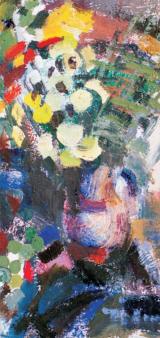2025. July 3. Thursday
Ottó Herman Museum - Miskolc

|
Address: 3530, Miskolc Görgey Artúr utca 28.
Phone number: (46) 560-170, (46) 560-171
E-mail: latogato@hermuz.hu
Opening hours: Tue-Sun 10-16
|
The Herman Ottó Museum of Miskolc is the centre of the Borsod-Abaúj-Zemplén county museological institute. It consists of 7 region museums, 3 specialized collections, 3 memorial places and 5 exhibition centres.
The museum was founded in 1899, under the name of Borsod-Miskolczi Museum. Its operation was first financed by the Borsod-Miskolczi Museum and Cultural Community, then from 1914 to 1949 the county of Borsod and the town of Miskolc provided the means necessary for its running. The institute took the name of the versatile scientist Ottó Herman in 1953. The museum became the centre of the museological organization in 1963, and at this time its target area extended to the entire county of Borsod-Abaúj-Zemplén.
In the depository of the museum there are nearly half a million separately filed items. The largest collection is that of archaeology, the outstanding units of which are the first material relics of the prehistoric age, the relics of Bükk and Bodrogkeresztúr from the Neolithic age, and representative works of arts from the time of the Hungarian conquest. The mineral collection of the museum preserves the largest Hungarian stone and mineral connection of the Carpathian basin. The importance of the fine arts collection kept here is proven - besides of the large number of the works - by the fact that it contains some masterworks of all outstanding Hungarian painters. Our national painting can be presented from Mányoki to Moholy Nagy through all the others. The historical collection is rich in items of industry history, and joining this there is an archive of nearly half a million pages of written material covering the period between the 14th century and today. The internationally recorded part of the ethnographic collection is that of the popular arts material ofthe "Matyó" and "palóc" ethnics. One of the biggest numismatic collections of Hungary can also be found in the Herman Ottó Museum.
The Herman Ottó Museum was declared a scientific research centre in 1985 by the cultural government. Several regularly published periodicals secure the publication of the achievements of our 40 professional employee and the research workers connected to the institute. The enlargement of the library of nearly 200,000 volumes is secured by systematic purchase and exchange relationships.
In 1999 the Herman Ottó Museum became the museum of the year in Hungary. The town council presented a Pro Urbe prize to the museum for its versatile and excellent professional activities. From 1997 the collection gives home to the Historico-cultural and Museological department of the University of Miskolc.
Dr. László Veres museum director.
The museum was founded in 1899, under the name of Borsod-Miskolczi Museum. Its operation was first financed by the Borsod-Miskolczi Museum and Cultural Community, then from 1914 to 1949 the county of Borsod and the town of Miskolc provided the means necessary for its running. The institute took the name of the versatile scientist Ottó Herman in 1953. The museum became the centre of the museological organization in 1963, and at this time its target area extended to the entire county of Borsod-Abaúj-Zemplén.
In the depository of the museum there are nearly half a million separately filed items. The largest collection is that of archaeology, the outstanding units of which are the first material relics of the prehistoric age, the relics of Bükk and Bodrogkeresztúr from the Neolithic age, and representative works of arts from the time of the Hungarian conquest. The mineral collection of the museum preserves the largest Hungarian stone and mineral connection of the Carpathian basin. The importance of the fine arts collection kept here is proven - besides of the large number of the works - by the fact that it contains some masterworks of all outstanding Hungarian painters. Our national painting can be presented from Mányoki to Moholy Nagy through all the others. The historical collection is rich in items of industry history, and joining this there is an archive of nearly half a million pages of written material covering the period between the 14th century and today. The internationally recorded part of the ethnographic collection is that of the popular arts material ofthe "Matyó" and "palóc" ethnics. One of the biggest numismatic collections of Hungary can also be found in the Herman Ottó Museum.
The Herman Ottó Museum was declared a scientific research centre in 1985 by the cultural government. Several regularly published periodicals secure the publication of the achievements of our 40 professional employee and the research workers connected to the institute. The enlargement of the library of nearly 200,000 volumes is secured by systematic purchase and exchange relationships.
In 1999 the Herman Ottó Museum became the museum of the year in Hungary. The town council presented a Pro Urbe prize to the museum for its versatile and excellent professional activities. From 1997 the collection gives home to the Historico-cultural and Museological department of the University of Miskolc.
Dr. László Veres museum director.
|
Programmes
|
|


